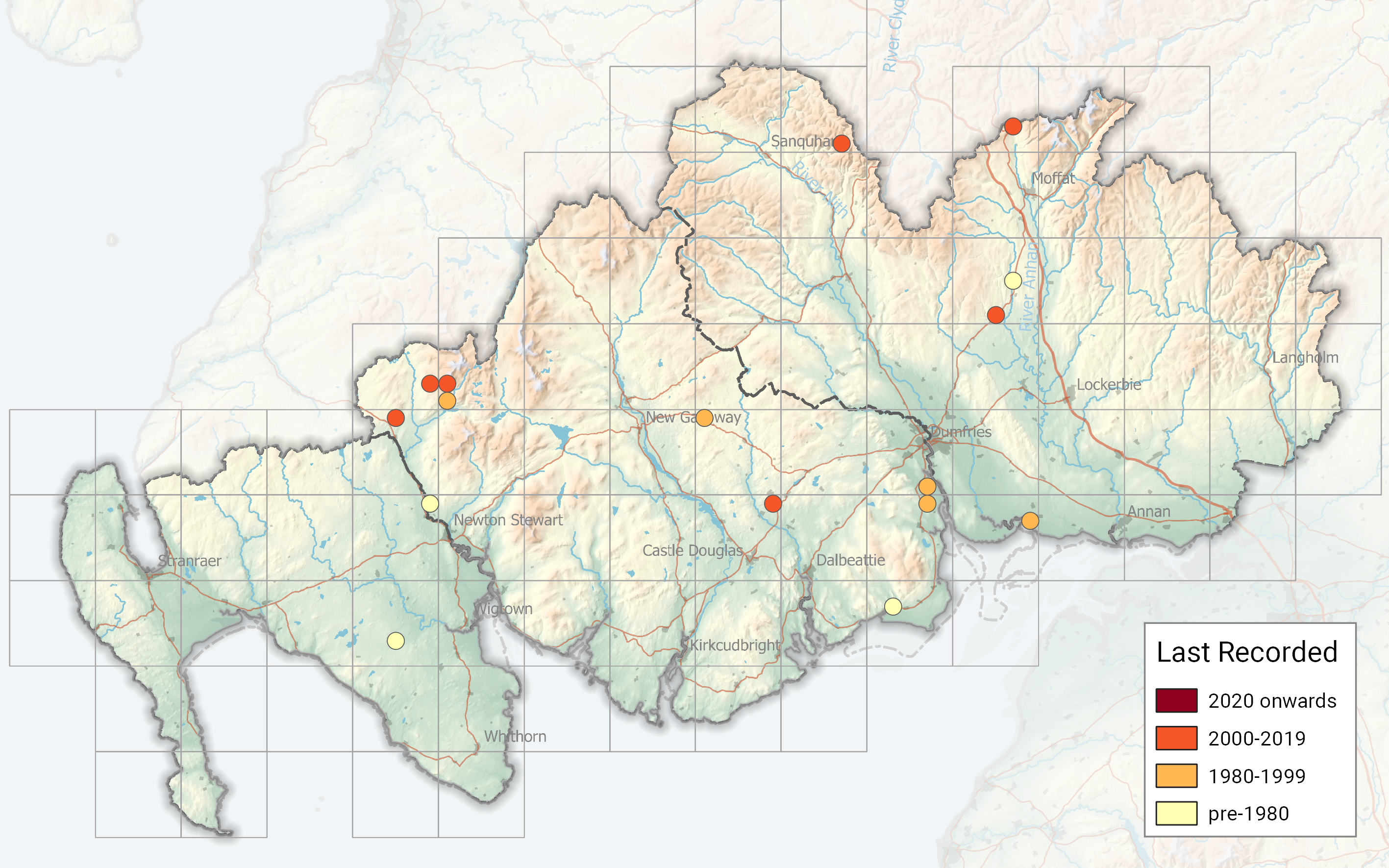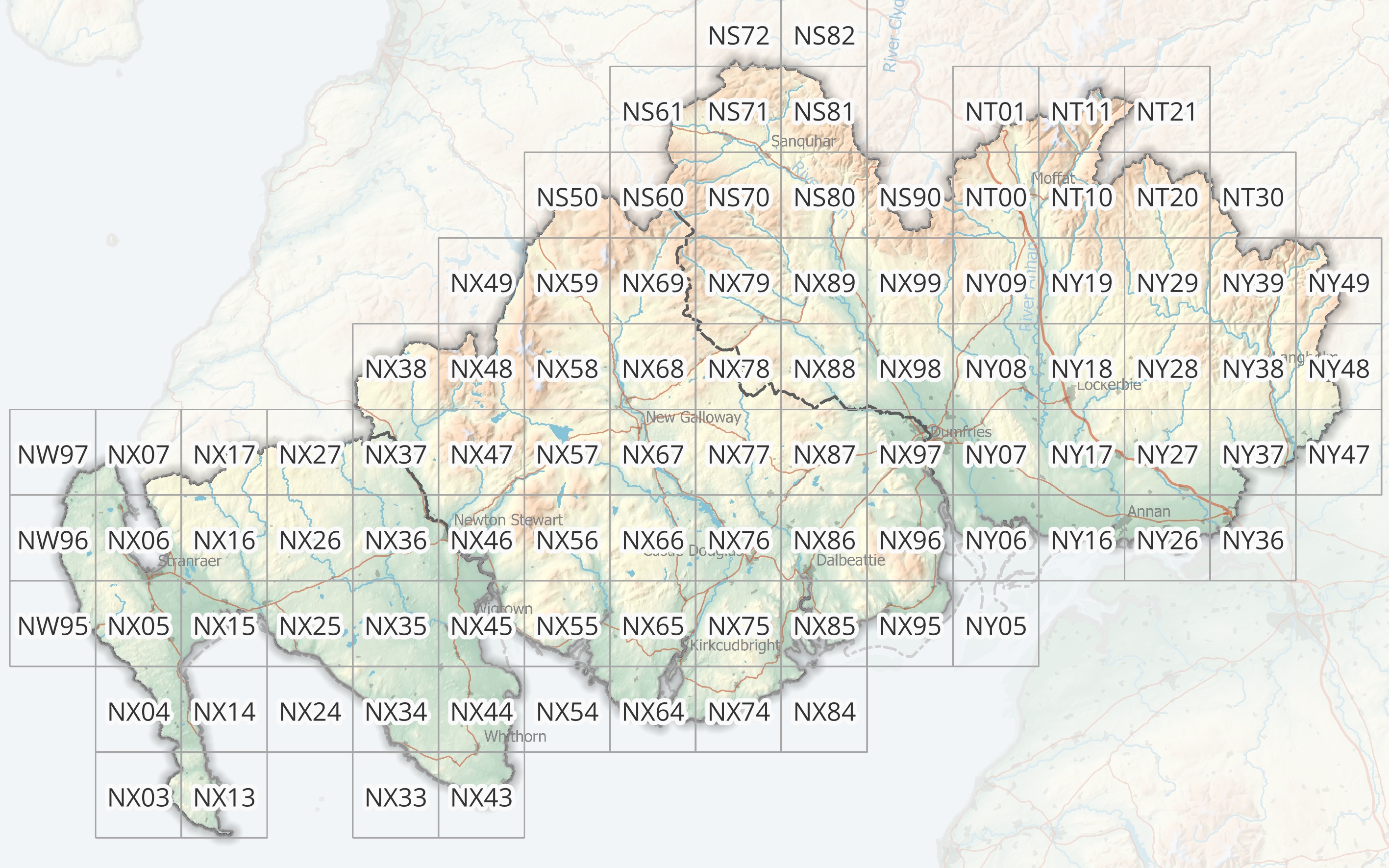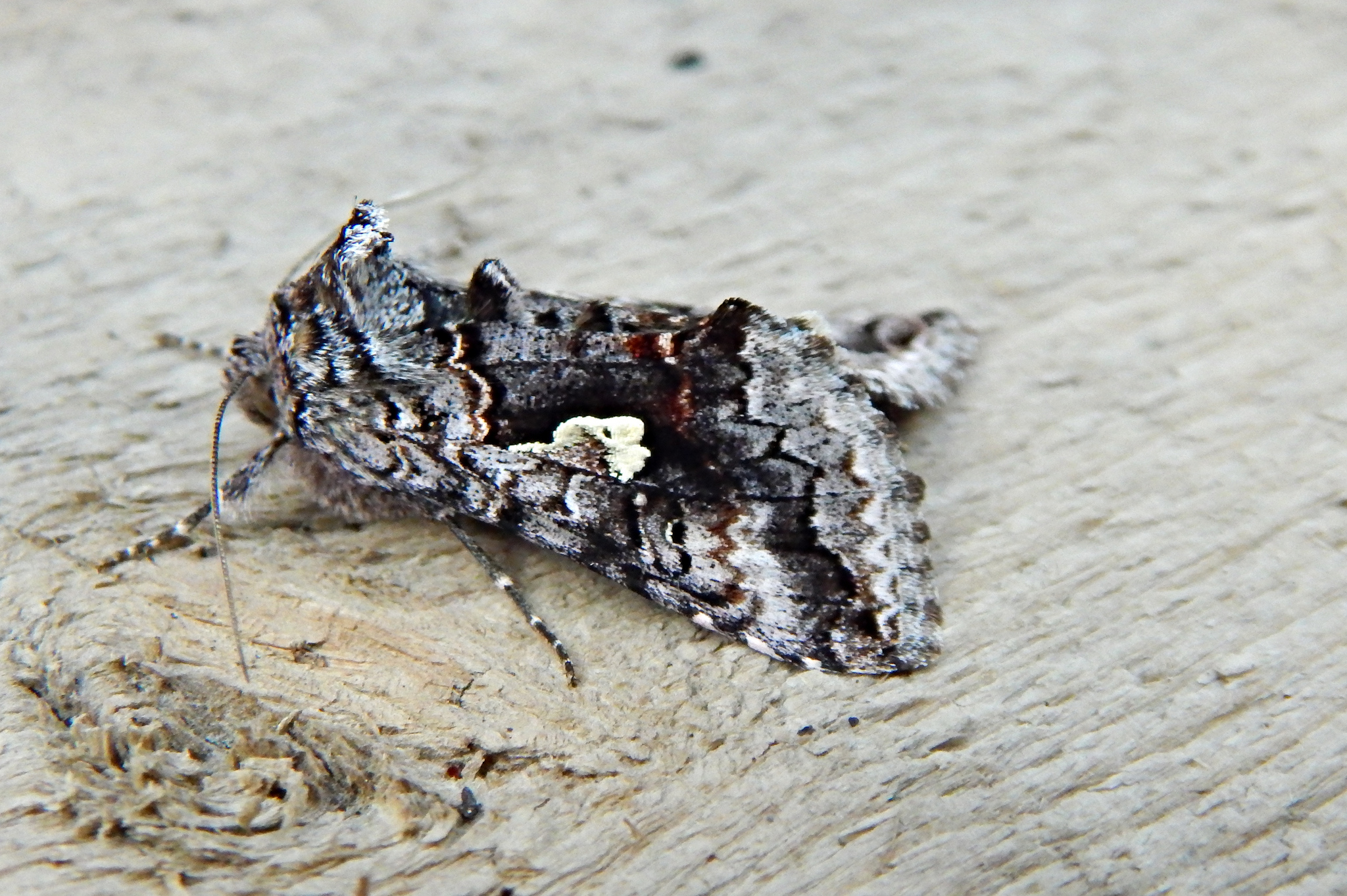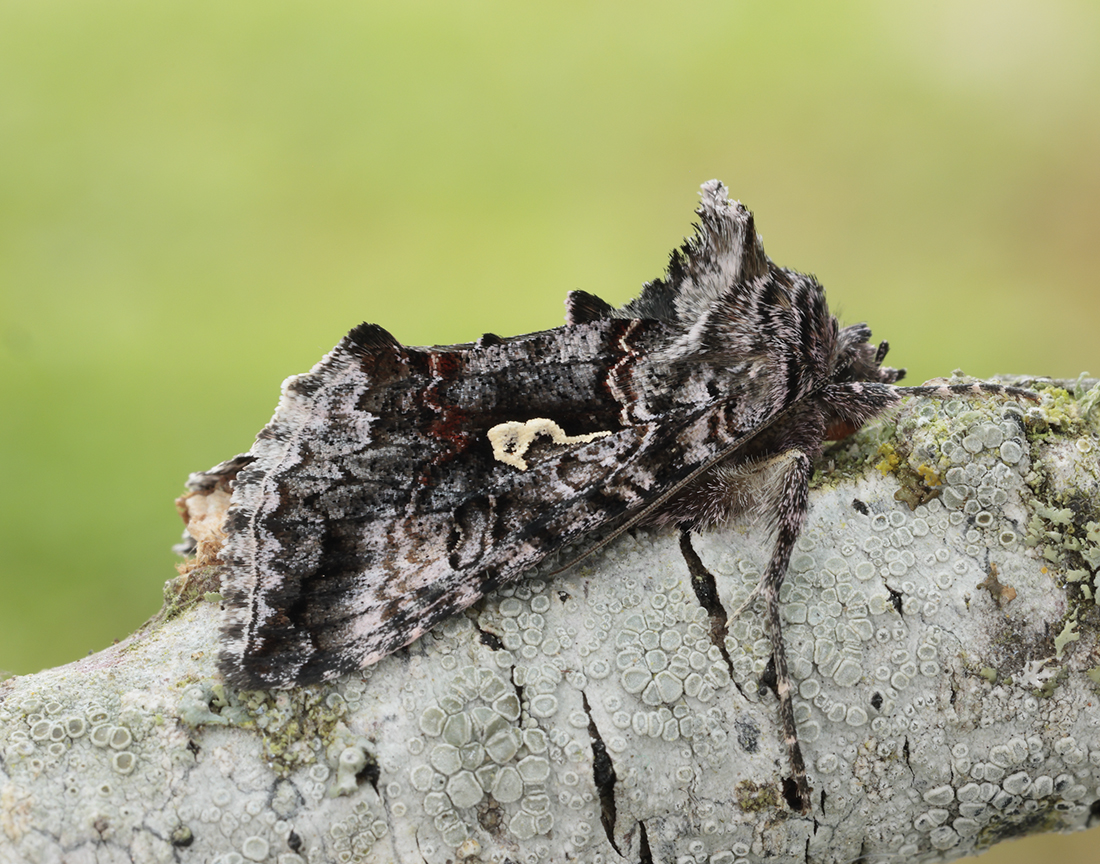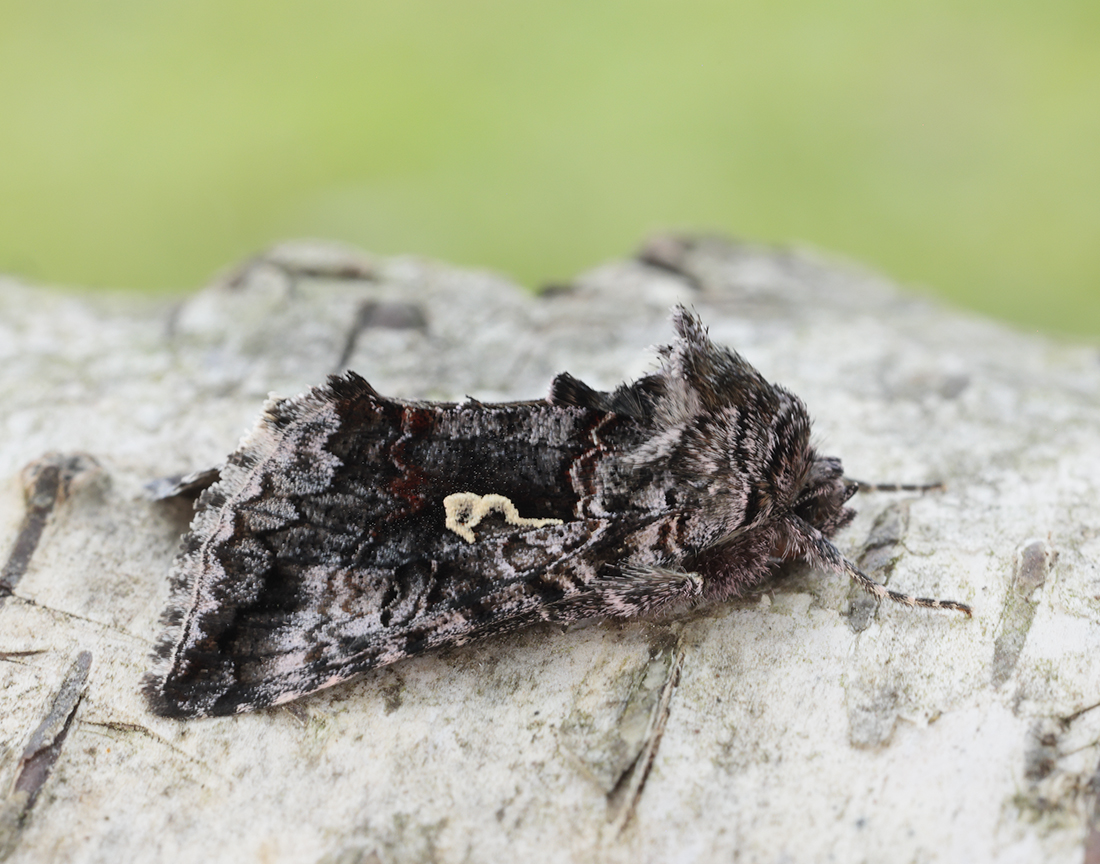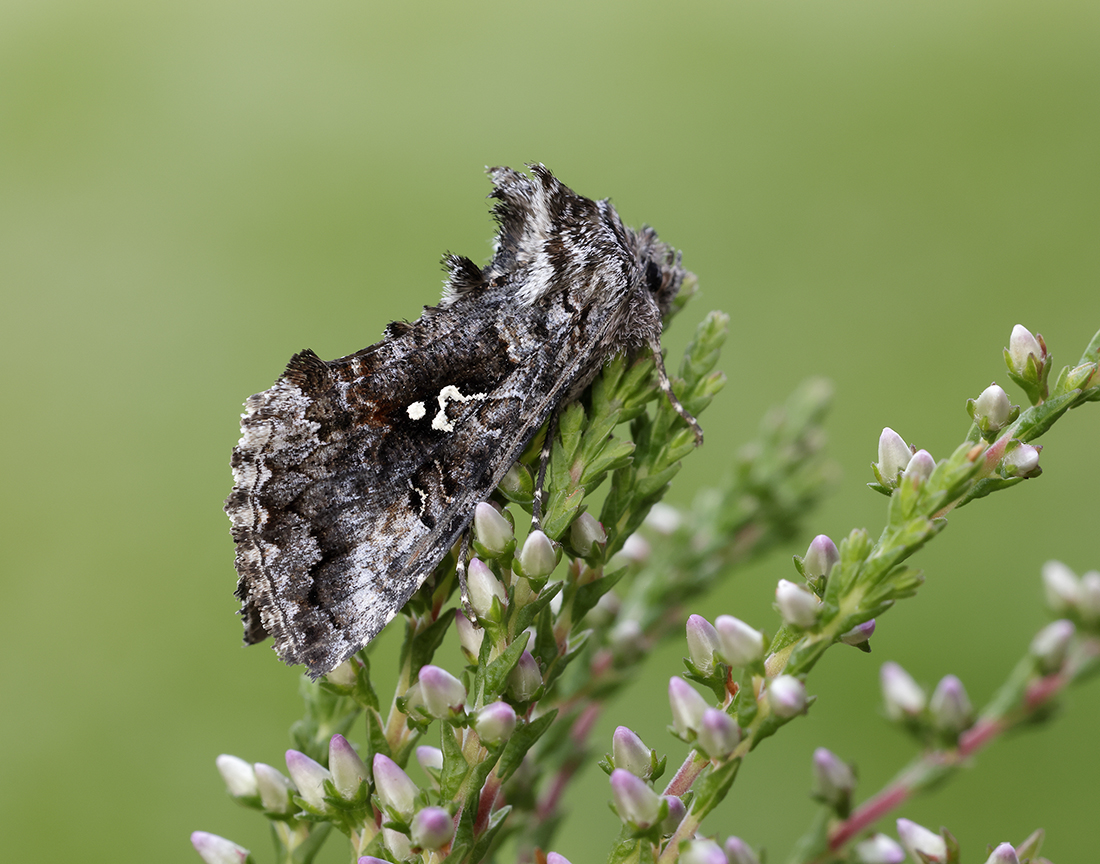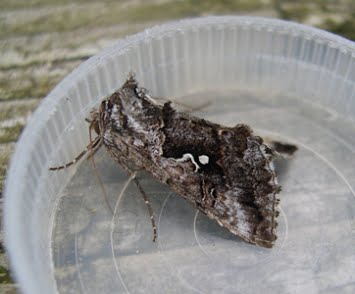Identification
The marbled, blackish forewing that is clouded with pale silvery grey and has a central silver mark should help to identify it. This mark is very variable. Most migrants are smaller, marked with a duller grey and have a paler hindwing.
Recording Method.
Attracted to light and can be seen feeding on flowers at dusk. Can be flushed from heather by day.
Life cycle
One generation. Overwinters as a small larva, during late July to early June. Pupation takes place in a cocoon that has been formed on the foodplant.
Larval foodplants
Heather, Bilberry and Bog Bilberry.
Habitat
A moorland species.
History
The earliest notification of this species is published in Stephens (1829) with the Rev. William Little recording it at Raehills (VC72) stating it to be not rare.
Gordon (1913) stated that larvae had been taken on heather at Darsnag House, Corsemalzie, Wigtownshire on 5th June 1907.
The next record was not until 1951 when one was found at Southwick (VC73) on 8th July (Duncan & Cunningham 1952).
Between 1975-80 another was recorded near Gretna (VC72), then two were trapped at Penninghame (VC74) Rothamsted station between late June and mid-July.
In the 1990s it was recorded from Knowetop Lochs SWT (VC73), Caerlaverock WWT (VC72) and Kirkconnell Flow NNR (VC73).
In the 21st century it was trapped on Bennan in Glen Trool in August, 2004 and 30th July 2005, with one other record from the Mennock Pass (VC72) in mid-July 2005. Another was trapped at Corehead Farm (VC72), late July, 2010.

